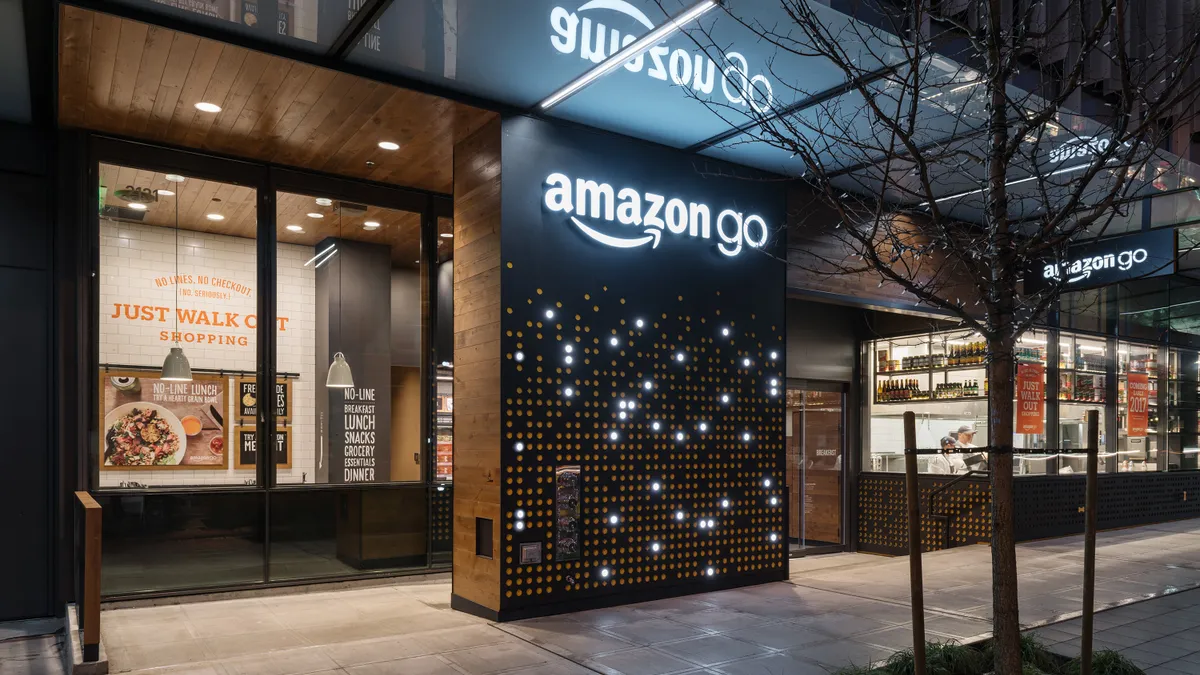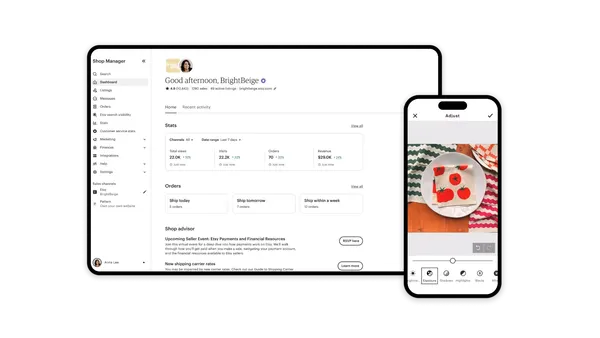Dive Brief:
-
Amazon has opened its first Amazon Go cashierless convenience store in San Francisco, its fifth location overall for the concept, and already is working on launching a second store in the city, due to open this winter, the company said on its website.
-
The e-commerce giant also is planning another store in Chicago, its second spot in that city, which the company plans to open in 2019, according to Amazon. Separately, Recode reported that the e-commerce company also is developing an Amazon Go location in New York City, inside the Brookfield Place office building near the World Trade Center site.
-
The new San Francisco store is located at 300 California St. in the city's financial district, and contains about 2,300 square feet of space, while the second planned location, at 98 Post St., is 1,750 square feet.
Dive Insight:
Amazon is continuing its rapid pace of opening Amazon Go stores by focusing on a store size of around 2,000 square feet and with freshly prepared meals and meal kits products, backed up by typical convenience store items.
The first San Francisco opening comes several days after the San Francisco Chronicle speculated that an Amazon Go store was coming to the California Street location and also comes months after it was first reported that Amazon had zeroed in on San Francisco for one of its first stores.
However, the San Francisco opening potentially could be the most interesting one yet for Amazon Go, as it commences something of a competitive face-off with other cashierless or automated checkout/mobile checkout concepts from the likes of Standard Cognition, Zippin and Inoyko, all of which are technology companies that have opened their own pilot stores in the Bay Area.
Amazon's rapid expansion and reportedly grand plans for Amazon Go's proliferation in the coming years may overshadow what this band of startups is doing with the automated checkout concept. But perhaps seeing different technologies with the same goals operating in close proximity to one another will highlight key differences between the approaches, as well as how customers feel about each of them in their early stages.













